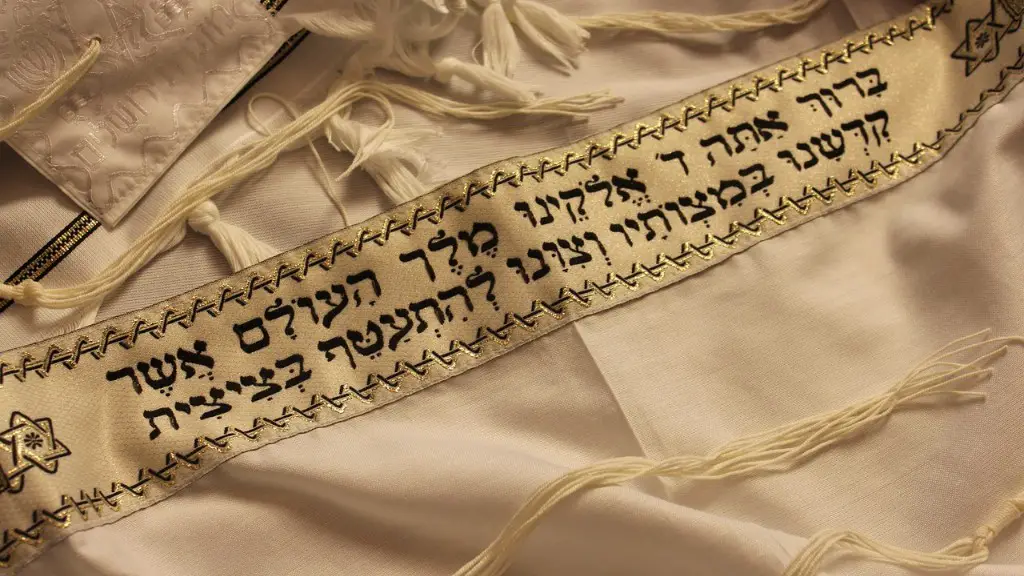What Are The Three Largest Branches Of Christianity
Christianity is the largest global religion, with an estimated 2.4 billion followers. There are numerous Christian denominations, with some of the largest having more than 100 million members. The three major branches of Christianity are Catholicism, Protestantism and Eastern Orthodoxy.
Catholicism
The largest single branch of Christianity is Catholicism, which originated with the teachings of Jesus Christ and his apostles. Catholicism includes not just Roman Catholicism, but also Eastern Catholic churches such as the Maronite Catholic Church, the Melkite Greek Catholic Church and the Syrian Catholic Church. As of 2019, the Catholic Church had approximately 1.3 billion members across the world.
Central to the beliefs of Catholicism is the Pope and he exercises a strong level of leadership over the Church. The Roman Catholic Church is divided into traditional ecclesiastical divisions or provinces, and each has a Metropolitan Bishop to oversee its spiritual structure. Catholicism also has its own distinct rituals and practices, as well as a distinct system of canon law.
Protestantism
Protestantism began in the 16th century as a movement to reform the Catholic Church. The teachings emphasised the role of individuals in their own salvation and a focus on the Bible as the main source of authority. Protestants have developed a wide range of beliefs and practices, with different groups emphasising different aspects of Christianity.
The largest Protestant denominations are the Baptists, Anglicans, Methodists and Lutherans. Together, these denominations make up around 500 million adherents worldwide. The growth of Protestantism has been particularly strong in the developing world.
Eastern Orthodoxy
Eastern Orthodoxy is the third major branch of Christianity, and the largest among Eastern Christian churches. Eastern Orthodoxy is based on the traditions of the Eastern Roman Empire and preached by Byzantine theologian St. John Chrysostom. It developed a distinct theology from Catholicism and Protestantism, particularly in regard to its understanding of salvation, and its views on the authority of church leaders.
The primary denominations of Orthodoxy are the Greek Orthodox Church, the Russian Orthodox Church and the Church of Constantinople. Together, these three have an estimated 250 million adherents around the world.
The History of the Three Largest Branches of Christianity
The three largest branches of Christianity have long and complex histories. Catholicism and Eastern Orthodoxy both have their roots in the early church and the foundational teachings of Jesus Christ. Protestantism emerged as a breakaway movement from Catholicism, initially as a means of reforming the practices of the Catholic Church.
The Early Church and Catholicism
The early Church, which began in the first century, was the original form of Christianity. During this period, Jesus Christ and his apostles spread the teachings of Christianity throughout the ancient world. The teachings and structure of the Church evolved over time, and by the 4th century, it was a unified system of belief with a hierarchy of leaders, from the local bishop to the Pope.
The Great Schism
In 1054, the relations between the Western Church (which later became the Roman Catholic Church) and the Eastern Church (which later became the Eastern Orthodox Church) deteriorated and led to a split known as the Great Schism. This split caused two distinct branches of Christianity to emerge, each with their own practices, rituals and beliefs.
The Reformation and Protestantism
The Reformation began in 1517 when Martin Luther proposed reforms to the Catholic Church. This sparked a succession of new reform movements, leading to the development of Protestantism. The different Protestant denominations each emphasise different aspects of Christianity, and the break from Catholic teachings has grown over time to include an estimated 500 million adherents today.
Q&A with an Expert on the Three Largest Branches of Christianity
To gain an in-depth understanding of the three main branches of Christianity, we talked to Francesca Pecorino, a professor of Christian history at Barcelona University.
Q: What do you think are the major differences between Catholicism and Protestantism?
A: “The main differences between Catholicism and Protestantism are rooted in their divergent views on doctrine, such as the role of scripture and the nature of salvation. Protestantism places more emphasis on individual interpretation of the Bible and personal repentance and conversion, while Catholicism relies on the Scriptures and the Church hierarchy for teaching and decision-making.”
Q: Why was the split between the Roman Catholic Church and the Eastern Orthodox Church so significant?
A: “The Great Schism between the Roman Catholic Church and the Eastern Orthodox Church was driven by differences in practice, language, culture and theology. This split was very significant because it established two distinct branches of Christianity, each with their own beliefs and practices.”
Q: What do you think are the major contributions of the Protestant Reformation to Christianity today?
A: “The Protestant Reformation played a key role in reshaping Christianity. It brought about a renewed commitment to the importance of scriptures, an emphasis on personal piety, a new conception of the priesthood, and the growth of religious individualism. These elements have had profound implications for the modern church.”
Theology and Doctrine
The three major branches of Christianity are united by the underlying theology and core teachings of the Christian faith. However, they hold particular interpretations based on their own distinct traditions and practices.
Catholicism
The Roman Catholic Church maintains the belief in the holy trinity, of the Father, the Son and the Holy Spirit. It sees the role of the Church as one of divine authority and emphasises the importance of hierarchy. Central to this is the primacy of the Pope as the head of the Church and the infallible interpretations of doctrine.
Protestantism
Protestants place great emphasis on the authority of scripture and the interpretation of the Bible. This is known as sola scriptura. In contrast to Catholicism, Protestantism sees the Church as a voluntary association, and emphasises the importance of personal conversion and repentance for salvation.
Eastern Orthodoxy
Eastern Orthodoxy has a distinct theology from both Catholicism and Protestantism. It teaches that salvation is not just a matter of personal faith, but is also determined by the actions and participation of the Church. It also places a strong emphasis on the role of tradition and the continuity of the Church.
More in Depth Look
The development of the three major branches of Christianity has shaped the history of the Church and the beliefs held by modern Christians. To get a more in-depth understanding, it is necessary to look at the core teachings, the history and the doctrines of each branch.
Central Teachings
At the core of all three branches of Christianity are the teachings of Jesus Christ and His apostles. This includes the belief in the trinity, the central role of Jesus in salvation, and the importance of faith, love and forgiveness.
History
The history of the three main branches of Christianity is complex and long-reaching. Catholicism has its roots in the foundation of the early Church, while the Eastern Orthodox Church emerged from the Great Schism in 1054. Protestantism was born from the Reformations of the 16th century.
Doctrine
While all three branches of Christianity hold the same core Christian beliefs, they each have different interpretations and doctrines in regard to Scripture, authority and salvation. Catholicism relies on the Church hierarchy and the infallible interpretations of the Pope, while Protestantism holds to the authority of the Bible and emphasises personal decision-making and repentance. Eastern Orthodoxy has its own distinct theology, but retains elements of both Catholic and Protestant beliefs.
Modern Church Life
The three major branches of Christianity are united by the same core teachings and beliefs, but each has its own practices and traditions in terms of Church life.
Catholicism
The Roman Catholic Church has a hierarchical structure, headed by the Pope, and its main ceremonies and rituals are celebrated throughout the year. The Church also has its own system of canonical law to regulate its members’ behaviour and guide its own decision-making.
Protestantism
Protestants emphasise personal piety and the Bible as the ultimate source of authority. Church services are often led by pastors who give sermons and lead worship. Many Protestant denominations also hold to a system of sacraments and ceremonies similar to Catholic traditions.
Eastern Orthodoxy
Eastern Orthodoxy places great emphasis on liturgy and traditions, such as fasting and the liturgical calendar. The Church also has its own distinct patterns of worship and its own hierarchy of priests and bishops.
Social, Political and Economic Impacts
The three main branches of Christianity have had a lasting impact on social, political and economic life.
Catholicism
The Roman Catholic Church has had a long history of involvement in social and political matters. It has been involved in political debates and had a profound influence on Western laws and culture. It has also played a part in major social reforms and movements, such as human rights and international aid.
Protestantism
Since the Reformation, Protestantism has been closely linked to the values of individualism and capitalism. The Protestant ethos emphasises personal responsibility, which is seen as being important for economic activity. Similarly, the view of salvation being a matter of personal faith has played a role in the development of modern democracies.
Eastern Orthodoxy
Eastern Orthodoxy has had a profound influence on the societies of the Eastern world. In countries such as Greece and Russia, Orthodoxy is closely linked to the culture and language, and it has shaped the values and beliefs of Orthodox society. Orthodoxy also has an impact on the economic life of Orthodox countries, from taxation to banking, and from agricultural practices to welfare systems.


